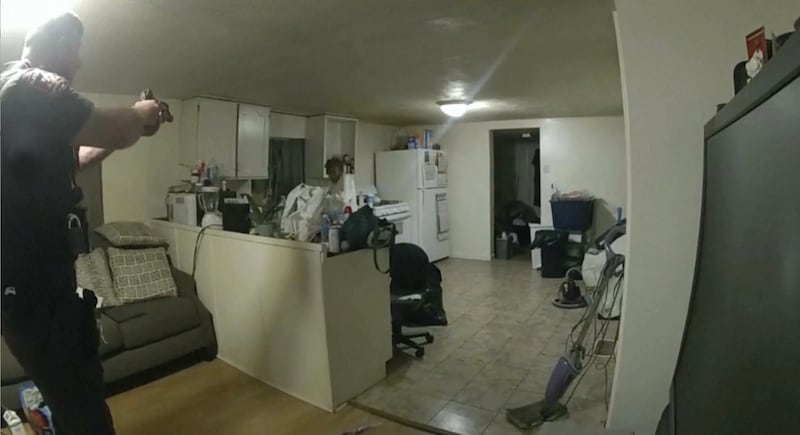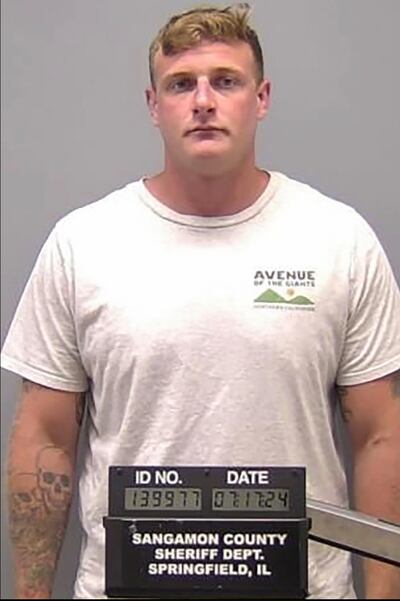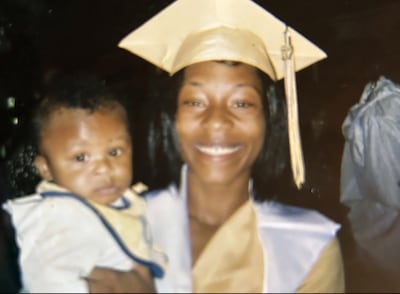Early in the morning of July 6th, Sonya Massey thought she heard someone outside her home in Woodside Township, Illinois, three hours southwest of Chicago. So she called the local sheriff’s emergency line to ask for help. The dispatcher sent over two deputies, who walked around the property to make sure it was safe.
Then the lead officer, Patrolman Sean Grayson, knocked on Massey’s door.
She took almost five minutes to open it. Maybe that’s why he quickly grew aggressive, because she’d made him wait. Or he might have been put on edge by her detachment and confusion; Massey was struggling, he said later, to follow a simple conversation. Or maybe it was the natural reaction of a tall, powerfully built policeman towering over a small, thin woman standing in the doorway of her ramshackle little house after a call she clearly hadn’t needed to make.
Instead of telling her that everything was fine and walking away, Grayson asked why she’d taken so long to come to the door. He wanted to know whether the car parked alongside the house was hers; when she said it wasn’t, he had his partner run the plates to see whether she was lying. And he insisted that she show him her driver’s licence and followed her into the house to wait while she looked for it.
RM Block
They stepped into a dimly lit room. The front half served as a living space – it had two couches jammed into it – the back half as a kitchen, with a counter dividing them. For a minute or two Massey sat on one of the couches, rifling through her purse, while Grayson stood in front of the other, in clear view of the kitchen. That’s when he noticed a pot of water boiling on the stove and, somehow fearing that it might be a danger, told her to turn it off.
She got off the couch, walked around the counter, clicked off the burner, and picked up the pot to empty it into the kitchen sink. Although Grayson was already some 15ft from her, he took a step back. She asked him where he was going. “Away from your hot, steaming water,” he said.
“I rebuke you in the name of Jesus,” she replied, in a voice so flat it sounded as if she were reciting a prayer.
“Huh?” Grayson said. And she rebuked him again, in precisely the same tone.
Suddenly he was shouting at her that she “f**king better not” do something that he wasn’t specifying and threatening to kill her if she tried. When she turned toward him, not moving but simply looking up from the sink, he drew his service revolver, pointed it at her, and told her to “drop the f**king pot”. Instead she ducked. He swung around the counter that had been separating them, still screaming about the pot – an enraged white cop advancing on a terrified black woman – and shot her in the head.

It’s been four years since a policeman’s murder of George Floyd launched one of the largest mass movements in American history. The scale of Black Lives Matter was extraordinary: about 12 per cent of Americans participated in at least one protest in the summer of 2020, 2 per cent more than joined protests of any kind over the entire course of the 1960s. For a few months after Floyd’s death, that outpouring of activism seemed to be pushing the United States into a racial reckoning unmatched since the peak of the civil rights movement half a century ago. It forced cities to tear down statues honouring the Confederacy and other commemorations of the nation’s racist past. It led schools to rethink their curricula and businesses to adopt diversity programmes. And it raised the possibility of cracking open the racially charged system of law and order that has shaped Americans’ sense of justice for generations.
Then it collapsed.
Some critics have argued, fairly, that the movement undermined itself by putting at its centre a wildly unpopular demand to defund the police. But the protests produced more substantive proposals as well, among them a bill, introduced by then-senator Kamala Harris in June 2020, that would have used the federal government’s power to reform local police departments in meaningful ways.
Like so much of the movement’s agenda, the Bill ran into fierce Republican opposition. Donald Trump set the tone at the height of the summer’s protests with his swaggering march into the public square across the street from the White House. In the autumn’s presidential campaign, he repeatedly raised the spectre of rampant lawlessness fuelled by radical protesters who, he said, had already destroyed the central cities and were threatening the suburbs, while other Republicans prepared for an equally apocalyptic post-election crusade to portray the new educational initiatives and diversity programmes as dangerously subversive manifestations of reverse racism, meant to condemn whites for sins they hadn’t committed.

Those were ludicrous claims. But they tapped into ideas firmly embedded in the nation’s racial sensibilities. For centuries, white Americans have tended to perceive black Americans, particularly black men, as prone to violence. And in recent decades they’ve tended to see racism as a real but distant problem, well removed from their own lives. Those perceptions shaped their sense of 2020. Three-quarters of whites polled that summer said that the demonstrations following Floyd’s murder had been at least somewhat violent, though in fact more than 90 per cent of them had been peaceful. While half of whites agreed that there was structural racism in the United States, more than 70 per cent said that in their communities blacks and whites were treated equally.
None of that was enough to re-elect Trump in November 2020. But those perceptions did undermine the movement’s support, which by the end of the year was down 12 points from its summertime peak.

The Republicans’ post-election offensive made it worse. During the early months of 2021 they created a national panic over teachers’ alleged attempts to impose radical racial theories on the kids sitting in their classrooms. In response, 28 states passed laws restricting schools’ ability to teach about race. Eight states added prohibitions on diversity training in public institutions. And that autumn, senate Republicans defeated the police reform Bill Harris and her cosponsors had introduced the previous year. It’s never come up for a vote again.
In each of the three years since, the number of police killings has risen, from 1,050 in 2021 to 1,161 in 2023. There have been 730 so far this year; if that pace is sustained, 2024 will be the deadliest year for police shootings on record. And if its racial pattern holds, black Americans will be significantly over-represented among the dead. Massey was the 143rd black person killed by the police in 2024. Not quite two months later, the number is up to 162. That puts the black share of this year’s victims at 22 per cent, though blacks make up only 12 per cent of the American population.
[ Dennis Lehane and a journey through the dark heart of Irish-American racismOpens in new window ]
Grayson didn’t have his body camera turned on during his encounter with Massey. But his partner did. The local prosecutor used the footage to indict Grayson on a charge of first-degree murder. Then he released the recording to the public. Grayson has pleaded not guilty. A scattering of small protests followed, as did a few high-profile condemnations, the most prominent from the vice-president as well as President Joe Biden, who both cited he killing as evidence of racism’s enduring grip on the American justice system.
Still, there is no sign that Kamala Harris is going to make racial reform a major part of her presidential campaign, not when she’s trying to undercut Trump’s ongoing appeals to law and order by reclaiming her long history as a tough-on-crime prosecutor. And eight weeks after Grayson killed Massey over a pot of water, there is no mass movement out on the streets, demanding that Americans remember her name.
Kevin Boyle is an author and history professor at Northwestern University in Illinois. He will be giving public talks at events hosted by the University of Galway in Dungloe, Co Donegal, on Saturday August 31st and Charlie Byrne’s Bookshop, Galway, on Tuesday September 3rd.
- Sign up for push alerts and have the best news, analysis and comment delivered directly to your phone
- Join The Irish Times on WhatsApp and stay up to date
- Listen to our Inside Politics podcast for the best political chat and analysis



















